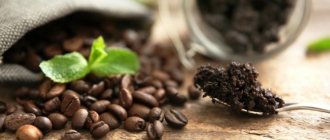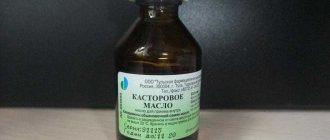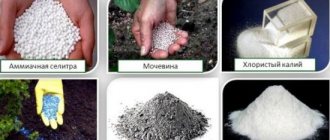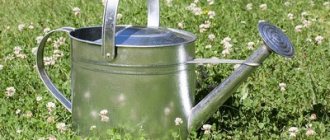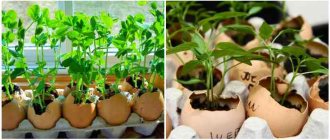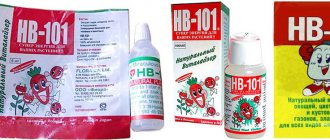Category: Organic fertilizers Reading time: 6 min · Views: 5,536
Cultivated plants need constant feeding, since the fertile layer of soil is depleted over time. Tea brewing as a fertilizer in the country is a very profitable and cheap fertilizer, which is appreciated by amateur gardeners in our country. Although there are voices of doubt about the effectiveness of such feeding, many summer residents successfully use sleeping tea in the garden and for feeding indoor flowers. Let's look at how best to use tea leaves for plants.
Tea as fertilizer for plants in garden beds
The advantage of sleeping tea, in addition to its availability as a supplement, is its prolonged effect. It does not release all the contained components to the crops at once, but as they decompose.
Before using in the garden, it is recommended to pre-dry the tea leaves. Such preparation will eliminate the possibility of the material becoming moldy. It is also undesirable to use raw materials from a drink to which sugar has been added: such tea leaves must be washed so as not to attract ants to the beds.
Dormant tea can be added to the soil at any stage of plant development: from preparing the bed to the period of fruit formation. It is optimal to add to holes when planting seedlings or sowing crops. It is important to consider that this fertilizer acidifies the soil, so it is especially recommended for the following vegetable crops:
- cucumbers;
- radish;
- pumpkin;
- carrot;
- sorrel.
If there is no need to increase the acidity of the soil, tea leaves should be added simultaneously with wood ash.
Bottom line
Tea leaves are an excellent way to fertilize the soil, which is used as additional plant nutrition. There is still debate among gardening enthusiasts about the effectiveness of using sleeping tea leaves. However, most lovers find the application of tea fertilizer beneficial and useful. Tea increases productivity and prolongs flowering, protects plants from late blight and mold, and improves soil structure.
The use of tea fertilizer is completely free, since the leaves are used. Fertilizing is applied regularly throughout the summer season - watered with a solution or mulched. This fertilizer is completely safe for plants, since microelements are in low concentration. However, fertilizing must be used carefully, since tannins are not beneficial to all plants. It should also be taken into account that tea leaves actively attract insects and birds.
Dried tea as fertilizer for seedlings
Used tea bags and their contents are a good replacement for peat tablets when growing seedlings yourself. It is very simple to prepare an unusual container. We cut the bags at the top and fill the free space with purchased soil mixture. Pressing them tightly together, place the “cups” in a container or tray. It is important that the bags do not tip over. We water the soil and sow the plants. When the seedlings reach the stage required for picking, we transplant them directly with tea bags.
In this case, sleeping tea will provide good nutrition to young plants, and the bags will protect the roots of the seedlings from damage during transplantation, which will eliminate the painful adaptation process.
Advantages and disadvantages of the method
The benefits of tea leaves have long been proven. The main advantage of this method is its accessibility. In addition, using such fertilizer is very simple, and most importantly, it is safe for health. There is also another positive point, the existence of which many of you did not even suspect.
The smell of tea leaves can scare away pets. Sometimes housewives complain that cats often chew the leaves of indoor plants, throwing soil from the flower pot onto the windowsill. Some people water them with infusion of citrus peels, but the tea leaves solution will be no less effective.
The main disadvantage of using this method is that it is not universal: it is not suitable for every plant. If a house flower requires a soil composition with a low pH level for normal development, then after tea procedures it will begin to get very sick.
Important : frequent application of tea leaves to the soil can lead to waterlogging and the appearance of chlorosis, and failure to comply with the dosage can result in serious harm.
Types of flowers that will not benefit from watering with tea leaves
There are plants whose growth and development can only take place in soil with a low concentration of hydrogen ions. These include: asparagus, amaryllis, begonia, pelargonium, tradescantia, and others.
You can determine the acidity of the soil yourself at home by using indicator paper. Its strips are coated with a substance that changes color depending on the pH level. You can purchase such a useful item in stores selling potted plants or departments for aquarists.
So, now you know everything about whether you can water flowers with tea. It is worth noting that most indoor plants react neutrally to this procedure. There is no evidence that tea leaves are very beneficial. It’s up to you to decide whether you should use it in home gardening or resort to chemical-based fertilizing. Good luck!
Spent tea as fertilizer for indoor plants
The used tea leaves are also used in indoor floriculture. There are at least 4 possible directions for its use:
- Foliar feeding. Water the pot with the remaining liquid from the teapot 1-2 times a month. Or make a special infusion of drunk tea for this. Ferns and cacti respond well to this feeding.
- Improving soil quality. Add dry tea leaves in any quantity to the soil mixture for indoor flowers. This ingredient will not only increase the nutritional value of the soil, but also improve its breathability and protect against mold formation.
- Drainage. Tea leaves for flowers can replace expanded clay if you place it at the bottom of the pot. Dried bags will do the job best.
- Pet protection. Relying on the specific smell of sleeping tea, it is recommended to use it as mulch to protect pots from attacks by cats.
Thus, the tea leaves that just yesterday went into the trash can will allow you to achieve abundant flowering and rich greenery on the windowsills.
Benefits of tea leaves
The beneficial substances contained in tea contribute to the growth of green mass and also prolong flowering. These include:
- Potassium. Accelerates growth and budding process. There is no need to worry about an overdose of the substance, since the tea leaves contain it in moderate quantities.
- Manganese. Takes part in the process of photosynthesis and is responsible for the condition of the root system.
- Magnesium. A deficiency can lead to slower plant development, leaf fall and the appearance of various diseases.
- Calcium. This microelement acts as an important link that takes part in the process of protein and carbohydrate metabolism.
Housewives who grow flowers at home are confident that regular watering with tea leaves can serve as good feeding. However, do not forget that this method is applicable only to certain types of plants. Otherwise, you can achieve the opposite effect, which will lead to rotting of the root system and their further death.
Dry tea can be used to create drainage. With its help, the top layer of soil is mulched, which allows moisture to evaporate less intensively. In this way, you can reduce the frequency of watering indoor flowers.
This is interesting: welding helps reduce the aluminum content in the soil, while metal inhibits plant growth.
Compost
The brewed leaf left over after drinking tea is an excellent addition to the compost heap. It will enrich organic fertilizer with many nutrients useful for cultivated plants, in particular nitrogen.
Old tea leaves contain tannins. They help speed up the decomposition of plant and food waste, which means the compost will take less time to mature.
Spent tea leaves are added to the compost heap, but not whole used bags. The latter may contain synthetic substances that are not processed by microorganisms. You will need to cut the old bag. Its contents are sent to compost, and the shell with the tag is thrown into the trash.
Methods of application
To make fertilizer, you can only collect loose leaf tea without additives or artificial flavors. The bags are not suitable for use in the garden or vegetable garden, since the leaves inside them are ground too finely and resemble more like ordinary dust, often with the addition of dyes. For any of the methods, the tea leaves must first be dried. It is better to dry in a dark place, since direct sunlight negatively affects the microelements contained in the leaves. High heat is not recommended.
In tablet form
The use of various ready-made tablets for seedlings has become a common practice for gardeners and gardeners.
It is possible to significantly accelerate the appearance of the first shoots, as well as simplify the application of fertilizers in the first weeks of cultivation. Instead of peat tablets, you can use tea tablets made with your own hands. Note! It is better to use tea with medium leaves or small fractions. Kenyan and Indian varieties are sold in this format.
There is no need to dry the tea too much, since you will need to add a little water to hold the mass together. For the tablets you will also need peat, coconut substrate in the proportions of 3:1:0.5, where 3 parts of tea. Mix everything thoroughly, pour in a little water until the mixture is slightly moistened. Line a small tea or coffee cup with cling film, place 3 tablespoons of the mixture inside, wrap, and press on a flat surface. You can plant the seedlings right away, or you can dry them, leaving the ends of the shell open, then store them and use them during the planting season.
Seed filler
Making your own filler for sowing seeds is more difficult than it might seem.
Excess of active fertilizers of any kind should be avoided. The seedlings will stretch out very quickly without forming the necessary support, which is undesirable. Tea is a good filler because the leaves release nutrients slowly and in small quantities. The leaves can be used in combination with peat and sand, with turf soil. The main soil should make up two-thirds of the total filler volume. Dry the tea first so that the soil does not become moldy and small midges do not appear in it.
Tea compost
Making complete tea compost is difficult.
Firstly, you will need a lot of brewed tea. Secondly, due to tannins, the mass will rot very slowly, it will dry out more quickly. Constant moisture will be required, which can lead to the appearance of insects and parasites. The smell from such homemade compost will be pungent, so it is better not to store the container with tea in a house or apartment. The best option for using tea leaves is to add tea leaves to regular classic compost up to a volume of about 20 percent of the total mass. The leaves, by releasing their enzymes, will significantly accelerate the decomposition of other organic components, so the compost will be ready for use in much less time. You can apply this compost with tea according to the standard fertilization scheme.
Note! You can use both green and black tea for this purpose. Exotic varieties of blue, white, and yellow species will not spoil the overall mass, but they will not bring much benefit either.
This is interesting: Tomato diseases - measures to combat bacterial, fungal, viral diseases
Using tea bags
Large and medium tea leaves are much more effective as fertilizer than tea bags. But inventive gardeners have learned to extract benefits from even used tea bags. The most interesting way to use them is as a unique alternative to peat tablets used for growing seedlings.
How it works? The top of the bag is opened, a layer of fertile soil is poured there and the seeds are sown. The bags are placed in dense rows in the container. Everything is irrigated from above with warm water and left until germination. When the seedlings reach the picking phase, they are transplanted into pots. Some of the plants are transplanted into open ground along with the bags, which gradually decompose in the ground.
Using tea leaves
The remaining tea in the teapot is placed on a sieve and dried, then placed in a storage container. If you wish, you can collect a considerable amount of this fertilizer over the winter, especially if your family likes to drink tea. In the spring, it can be used for various purposes - dug up with soil, added to compost, sprinkled under plants as fertilizer and mulch.
The easiest way to use tea leaves is to add them to a compost heap. The tannins contained in tea activate the decomposition process, causing the compost to rot faster.
Digging the soil together with drinking tea improves its structure, making it airy and moisture-permeable. It is recommended to add 0.5 kg of dry tea leaves per 1 m². Of course, it is impossible to collect the required amount of tea for the entire garden, but there will be enough supplies for a flower bed or a couple of vegetable beds.
Tea leaves promote better plant growth. It is not difficult to fertilize - you need to scatter dried, sleepy tea around the stem of the plant, mixing it with wood ash in the top layer of soil. During watering, the fertilizer will gradually release useful elements. When planting, dry tea leaves can be poured into the holes.
A good result is obtained by using sleeping tea as mulch, which will retain moisture and at the same time delay the germination of weeds. The top layer of soil under the mulch remains loose. To prevent such mulch from becoming moldy after rain or heavy watering, you need to loosen the top layer of soil.
Using tea leaves when planting carrots improves seed germination. You need to sprinkle the seeds sown in the furrows with a layer of dry tea leaves. The soil is not clogged, the carrots sprout smoothly and evenly. In garden conditions, the tea leaves quickly rot and serve as a quick supplement at an early stage of development.
Spilled tea
Sleeping tea is a cheap, natural soil amendment. Welding loosens it, and it allows air and moisture to pass through better. The used leaves are ideal for fertilizing open soil in the garden. They are added at any period of plant development. During watering, the foliage begins the process of decomposition and useful components are released from it. After harvesting, a plot of land is dug up along with the tea. It is recommended to add tea leaves in a proportion of 0.5 kg per 1 sq. m.
Dormant leaf mass is used when growing indoor flowers. It is placed instead of drainage to retain moisture. This way the vegetation will not dry out during the heating season or in the summer, being under the sun. In addition, the dried tea leaves during rotting will enrich the soil with useful microelements. Plants with fragile root systems respond especially well to this mixture: begonia, violet. For flowers grown indoors, soil should be mixed with fallen foliage at a ratio of 3:1.
Fertilizer
As a classic fertilizer, you can use either freshly brewed tea, not yet dry, or pre-dried tea, and even an infusion of such raw materials.
The first option is best suited for open ground. It is better to combine tea leaves with ash, which is added during planting or digging. When adding fresh tea leaves that are still wet, you can ignore the growth phase of the crop. At any time, you can add leaves to the soil and carefully dig them up. Fertilizer with dry tea leaves is suitable for indoor plants. They must be added in small quantities to the soil during transplantation.
It is better to put fertilizer directly into the holes in the spring, since quite a lot of tea will be needed. Half a kilogram per square meter is an average calculation for moderately alkaline soils. If the PH imbalance is obvious, the dosage should be increased to 0.7 kilograms per meter.
A nutritious infusion can be prepared as follows: pour 1 glass of dry tea leaves with 3 liters of boiling water. Leave until completely cool. It is advisable to use it within the first 24 hours. There is no need to dose this fertilizer; it can simply be used when watering instead of regular water. This is an excellent option when additional feeding is needed in the middle of the season. A small concentration of microelements will not harm even the weakest plants, but will strengthen them.
Preparation of mulch
The method is to cover the ground with used tea leaves. Mulching prevents weeds from germinating if its layer is at least 5 cm. The soil is protected from drying out in hot weather, and from freezing in cold weather. Winter plantings of crops in this case show excellent germination results. After all, after watering or rain, the mulch gradually releases its beneficial substances to the seeds. Unfortunately, it is impossible to collect a lot of tea leaves at home. It is enough for one or two beds.
This method is suitable for open ground because it is ventilated and warmed up by the sun. At home, when tea waste is added to pots, mold may form or midges may appear, which will likely lead to weakening of the seedlings. To use this type of mulching, it is necessary to evenly distribute the tea leaves over the earthen area where garden crops, fruits or shrubs will be grown.
When does it make sense to collect tea leaves?
Few people will collect and dry tea leaves and then bury them in the ground. But in some cases this activity makes sense. For example, if you work in a cafe and bring home large volumes every day. Then you can add 0.5 kg of waste per square meter.
When working in a tea packaging factory, you can take the leftovers home or buy them on the cheap. Fresh, uncooked leaves are much more valuable, so they are added to the soil in smaller quantities.
Did you like the article? Share with your friends:
Hello, dear readers! I am the creator of the Fertilizers.NET project. I am glad to see each of you on its pages. I hope the information from the article was useful. Always open to communication - comments, suggestions, what else you want to see on the site, and even criticism, you can write to me on VKontakte, Instagram or Facebook (round icons below). Peace and happiness to everyone!

